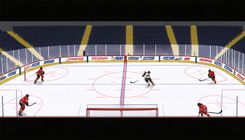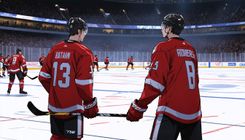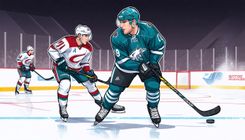2025 NHL Prospect Pool Rankings: Insights and Analysis

In examining the prospect pool rankings for the upcoming 2025-26 NHL season, there are several familiar names at the top positions, a situation that will likely not come as a surprise to many hockey enthusiasts. However, a key observation that emerged during the rankings process was the disparity between a team's standing and the state of their prospect pool. Traditionally, one might expect teams with less robust prospect lists to be positioned higher in the standings, yet this year, that correlation seems less evident. Factors such as trades, the graduation of prospects to full-time NHL roles, and the underperformance of others contribute to this trend, creating a ranking tier system that groups teams with similarly limited prospect depth. The methodology for these rankings considers a variety of aspects, including the recent draft selections, player movements to and from teams, developmental progress over the last season, and predictions for the upcoming one. As these players continue to develop, shifts in these rankings are expected in the coming year.
Defining 'prospect' for this analysis includes any player entering the 2025-26 season as a rookie or with minimal NHL experience. Notable prospects to follow include Linus Eriksson, Gracyn Sawchyn, and Jack Devine for the Florida Panthers. Despite winning the Stanley Cup for two consecutive years, the Panthers' prospect pool appears less than promising. However, promising talents like Jack Devine, who played for the University of Denver and briefly joined the AHL's Charlotte Checkers, demonstrate potential through strong skating skills and a solid work ethic. Gracyn Sawchyn, transitioning from the Edmonton Oil Kings to the AHL, is expected to showcase his high hockey IQ and determination. As the Panthers possibly aim for another playoff run, these players could provide valuable depth to the roster.
In contrast, the Vancouver Canucks' prospect pool largely consists of depth options, thus generating concern about their competitiveness in the rankings compared to other teams. Jonathan Lekkerimaki stands out as a significant player within this pool, possessing excellent shooting and skill. If the Canucks can retain him, he could play a vital role in the team's future. Meanwhile, Tom Willander is making his transition from Boston University to the pros, and although his style seems to suit the NHL, it will be interesting to see how he adapts to the Canucks’ system. New addition Braeden Cootes, a favorite from the 2025 Draft, must be nurtured properly to reach his potential, as mishandling could hinder his development. The prospect pools of several other teams, including the Los Angeles Kings, Ottawa Senators, and Toronto Maple Leafs, reveal similar narratives, with promising names like Liam Greentree, Carter Yakemchuk, and Easton Cowan emerging but overall lacking depth.
The New York Rangers' situation appears to be one of missed opportunities, particularly with regard to their development systems. Their current pool, while lacking in elite prospects, features standout names like Gabe Perreault, who is poised to make an immediate impact. Malcolm Spence adds excitement with his promising potential following a strong showing in the WHL, and Scott Morrow’s abilities offer a hopeful future for the Rangers' blue line. Transitioning to the Colorado Avalanche, the acquisition of Gavin Brindley and Ilya Nabokov provides a much-needed boost, with both players poised to assist at the NHL level soon. Similarly, the Calgary Flames and the Minnesota Wild are notable for their strong prospect cores, each featuring players like Zayne Parekh, who are ready to make significant strides in their development.
Teams like the Chicago Blackhawks and the Montreal Canadiens continue to enhance their prospect pools, addressing some of their prior deficiencies through strategic selections and trades. Chicago's addition of players such as Nick Lardis, poised to enhance their on-ice performance, alongside promising Russian talents reinforce their depth. Meanwhile, the Canadiens have also impressed through their drafting strategy, securing players like Ivan Demidov, highly regarded for his skills, further solidifying their future as a competitive team.
The New Jersey Devils maintain a balanced prospect pool, composed of solid performers yet lacking overwhelming star power. Players like Seamus Casey offer depth and potential, but further development will be critical to their success at the NHL level. In a fresh analysis, the expansion team, the Utah Mammoth, is recognized for rapidly improving their prospect pool by selecting impactful players such as Tij Iginla and Caleb Desnoyers, showcasing their commitment to building a competitive roster from the ground up.
Concluding with teams such as the Pittsburgh Penguins and the Tampa Bay Lightning, there appears to be a cautious optimism regarding their prospect futures. The Penguins, led by promising talents like Rutger McGroarty, are on the rise after effective drafting strategies revitalized their pool, while Tampa Bay's Sam O'Reilly and Ethan Gauthier are expected to make significant contributions in the upcoming seasons. As these rankings illustrate, the future landscape of the NHL is deeply intertwined with the ongoing development of these prospects, making careful attention to their growth essential for teams aiming at success.









